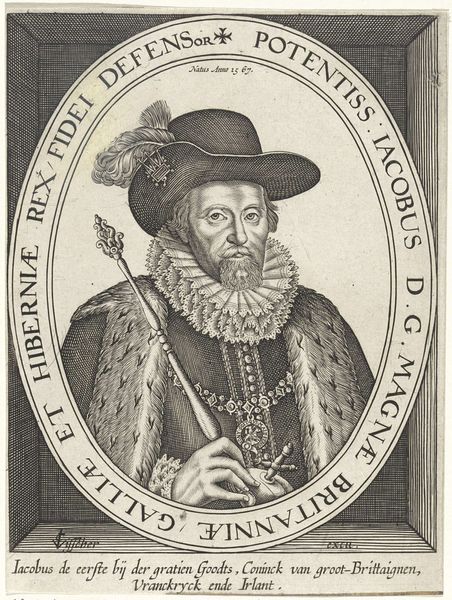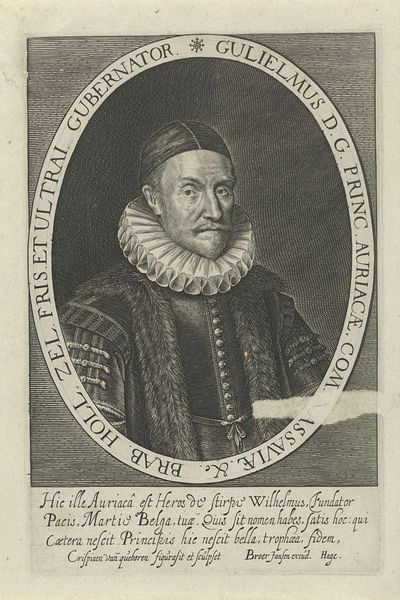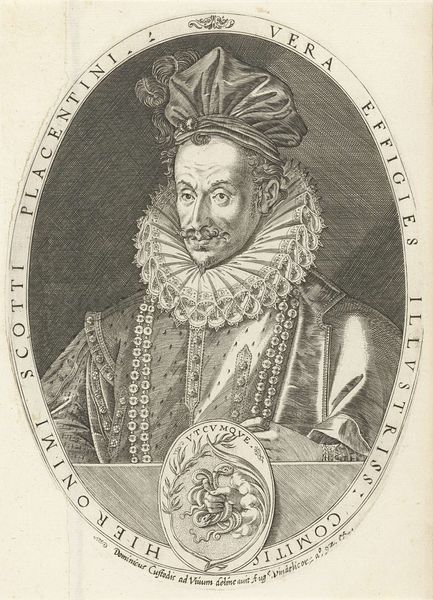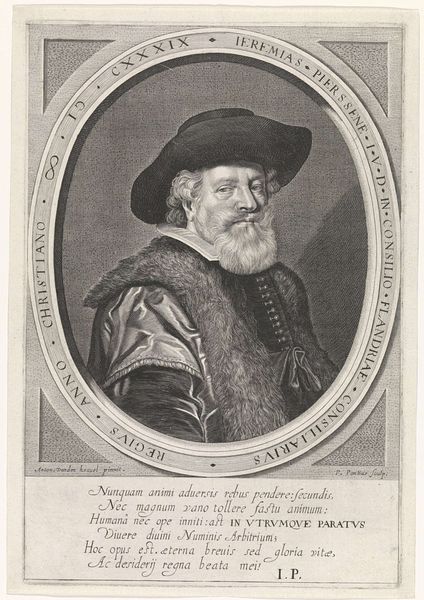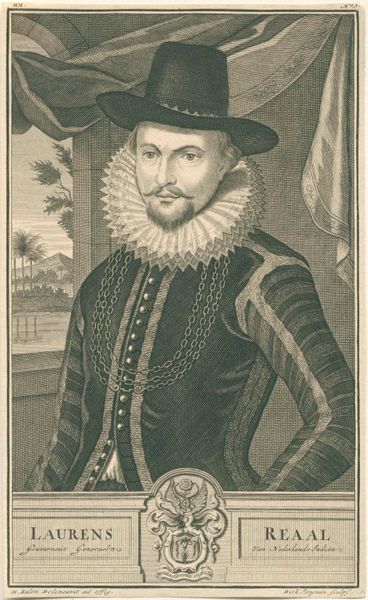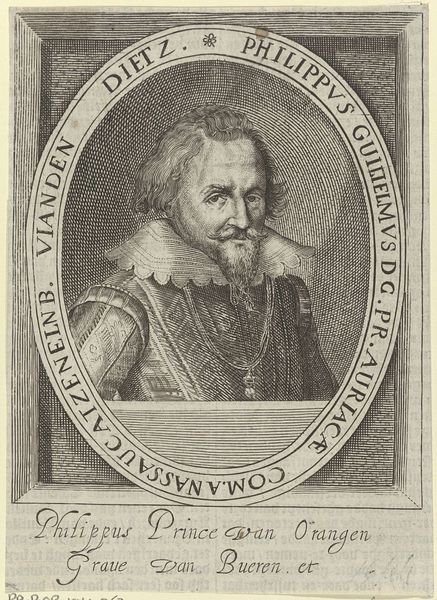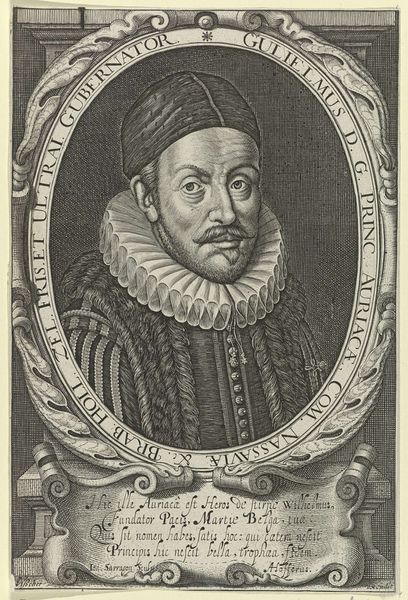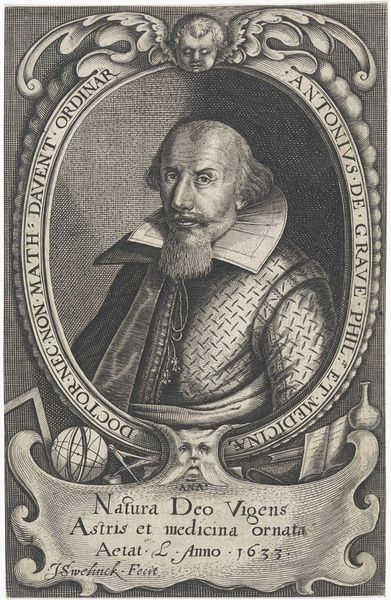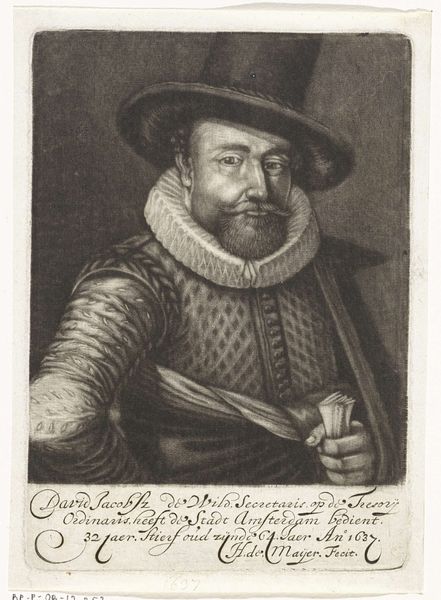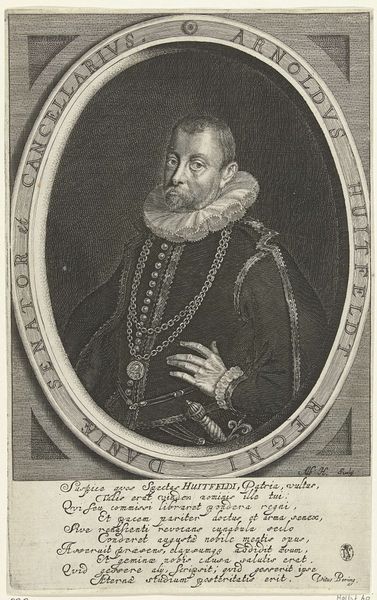
Portret van Thomas Franzius op 46-jarige leeftijd 1610
0:00
0:00
florisbalthasarszvanberckenrode
Rijksmuseum
print, intaglio, engraving
#
portrait
#
baroque
# print
#
intaglio
#
old engraving style
#
portrait drawing
#
engraving
Dimensions: height 162 mm, width 111 mm
Copyright: Rijks Museum: Open Domain
Editor: So, this is a portrait of Thomas Franzius at the age of 46, made in 1610 by Floris Balthasarsz van Berckenrode. It's an engraving. It looks pretty formal, a bit austere. What stands out to you, considering its medium and period? Curator: I'm interested in how this engraving—an intaglio print— functions within the early 17th century. Look at the density of the lines, creating texture on the clothing, especially that lace collar. The labour involved in the meticulous carving of the metal plate. Think about the purpose: a reproduced image for circulation. Was it intended to celebrate Franzius’s social standing and perhaps even advance the engraver's career? Editor: That makes me wonder about the cost and availability of the print. Was this something affordable to the masses, or mostly accessible to the elite? Curator: Good question. The relative ease of production with printmaking allowed wider distribution compared to unique painted portraits. Though certainly not mass-produced like today's images, engravings like these facilitated a level of visibility, thus reinforcing certain status or class. The use of Latin also limits who might easily read this, therefore suggesting a market or circulation amongst educated society members of that time. Note the precise lettering. This isn't just image-making, it's carefully crafted messaging. Editor: It's interesting to consider how the artist had to essentially mass produce art that showed such exquisite detailing and care in his subject. Curator: Exactly! It complicates notions of "high art" and challenges that kind of singular authorship, when reproduction and wider distribution were part of the intent and consumption from the start. I suppose that if we see Thomas Franzius as representing some status or social class, it speaks to our modern concerns with material value being expressed on a popular medium. Editor: I see what you mean! Thanks. Now I better appreciate what’s implicit in how these images were made and used.
Comments
No comments
Be the first to comment and join the conversation on the ultimate creative platform.
